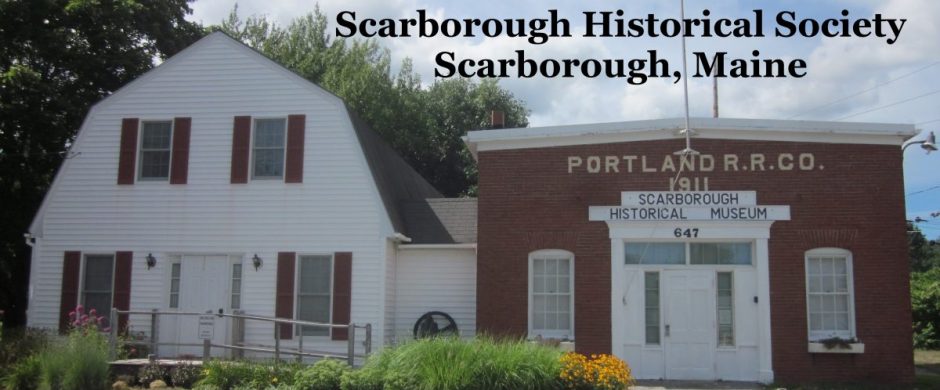Homer Studio Ephemera
By Linda Snow McLoon
With much-appreciated input from Phil von Stade & Ann Googins
Ephemera refers to written or printed material that is typically expected to have only short-term usefulness and, therefore, not usually saved. I have been sorting and indexing materials related to town business in the 1800s, adding names noted to the society’s extensive index. Most documents concern routine town business, but occasionally something pops up that is particularly significant to Scarborough history.
I have found two documents related to the building of Winslow Homer’s cottage and studio at Prouts Neck. The first is the 1882 list of building materials purchased from the Rufus Deering Lumber Company of Portland for use in the construction of a frame dwelling house and stable to be built on Libby’s Neck (the earlier name of Prouts Neck) for Charles S. Homer, Winslow Homer’s father.
The list of materials included lumber, shingles, and clapboards purchased over several months. (After 162 years of business on Commercial Street, the company was recently sold and will soon be replaced by a hotel and condos.)
 It’s not surprising that Charles Homer chose Alonzo Googins to build his house and stable, since Googins was a popular carpenter/builder who built many homes and hotels at Prouts Neck. It was Googins who purchased the building materials from the lumber company, and the name Alonzo was penciled in after the letter A. on the letterhead receipt.
It’s not surprising that Charles Homer chose Alonzo Googins to build his house and stable, since Googins was a popular carpenter/builder who built many homes and hotels at Prouts Neck. It was Googins who purchased the building materials from the lumber company, and the name Alonzo was penciled in after the letter A. on the letterhead receipt.
The cost of the 1882 order of building supplies totaled $675.37, toward which Alonzo Googins initially paid $165 in cash. Alonzo Googins was reputed to be an excellent carpenter but a bad businessman, and it appears he had difficulty paying the balance due for the building materials. Rufus Deering became impatient to receive further payment, and on February 13, 1883, he initiated a lien on the buildings and land on which they stood.
The second document describes the frame dwelling house and stable owned by Charles S. Homer of Brooklyn, Kings County, New York, located on land conveyed to said Homer by Hannah Louise Googins by deed dated January 22, 1883.
The listed seller of the land, Hannah Louise Googins (1843-1910), was Alonzo Googins’ wife. She was from the Libby family which at one time owned most of the Prouts Neck peninsula and pioneered the early tourist establishments there. Her grandfather, Thomas Libby, operated the first summer boarding business, the Prouts Neck House. Her father, Silas Libby, was the proprietor of the Cammock House, and her brother, Thomas J. Libby, built and ran the West Point House. Another family member associated with early tourism at Prouts Neck was Hannah’s younger sister, Anna Maria Libby, who married Ira Foss, owner of the prominent summer hotel, the Checkley House. Hannah’s cousin, Elmira Coolbroth, married John Kaler, proprietor of the Southgate House, and their daughter was Addie Kaler Vaill, whose home on the Black Point Road became the senior women’s residence that remains in operation today, Kaler Vaill.
In 1909 Alonzo Googins’ entire Prouts Neck complex, which consisted of his residence, garage, machine shop, carpenter shop, blacksmith shop, and stable located next to the Jocelyn Hotel burned to the ground. The flames also demolished the Jocelyn and the nearby home of Lemuel Lane. Alonzo Googins lost everything in the fire. He had only $1,000 worth of insurance on his residence; his losses in 1909 dollars exceeded $15,000.
Charles S. Homer purchased more land than needed for his home and stable, as Homer eventually owned about one-third of the peninsula now known as Prouts Neck. We can assume he paid off the remaining debt owed to Rufus Deering Lumber and had the building project completed. He christened it The Ark. At some point, the stable was moved and significant alterations made to it by the noted architect, John Calvin Stevens. It became the home and studio of Charles Homer’s son, the noted artist, Winslow Homer. It was in this place that many of the numerous masterpieces of Winslow Homer were created. The building is now owned by the Portland Museum of Art. The Scarborough Historical Society is pleased to have in its collections the ephemera documents that relate to the Homer cottage and stable’s construction.






